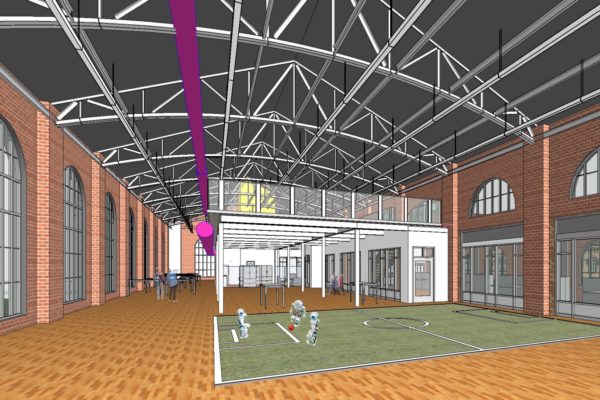AUSTIN, Texas — On Thursday, the University of Texas System Board of Regents approved $20 million to support The University of Texas at Austin’s collaboration with the U.S. Army Futures Command. This will be in addition to $30 million UT Austin is committing to strengthen faculty and research capabilities in areas of mutual interest with the Army.
The Futures Command, which is headquartered in Austin, is dedicated to modernizing the U.S. Army. It will designate UT Austin as the hub for two of its five research programs: Robotics and Assured Positioning, Navigation and Timing, which develops advanced location tools to help soldiers navigate contested environments.
UT Austin will conduct much of the research in these areas itself but also will coordinate and manage the research done on other university campuses. UT Austin will also participate in research directed from the three other hubs, most notably the Hypersonics and Artificial Intelligence hubs and future work on biodefense.
“This initiative at UT Austin is one of the reasons why we are so enthusiastic about our collaboration with the Army Futures Command,” UT System Board of Regents Chairman Kevin P. Eltife said. “Students and faculty will have unprecedented research opportunities. And the Army will be able to leverage the unparalleled expertise and innovation at UT Austin as it accelerates its research capability to serve and defend our country.”
UT Austin’s commitment includes building out two facilities. The largest will be a robotics research center in the Anna Hiss Gymnasium. This facility will allow students and faculty members to work alongside Army personnel. The second facility will be within the building on the J.J. Pickle Research Campus that houses the Center for Electromechanics, where work requiring additional physical security will be conducted.
“The Board of Regents’ visionary support will help UT Austin achieve its bold goals for important work with the Army Futures Command,” said President Gregory L. Fenves. “As we undertake research together that benefits national security, our partnership with the AFC will also prepare students to be leaders in critical technologies.”
Over five years, the university will also add eight new faculty hires in the related research areas.
The funds will help initiate and enable a long-term research relationship with the Army Futures Command. The ongoing work will allow UT Austin faculty members and students to bring research skills to bear on key technical problems the Army must solve to remain competitive. Students will have the opportunity to work closely with Army personnel in ways that enhance their efforts to go on to valuable careers in industry, academic research and the military.
In 2018, the Army created the Army Futures Command as an organization with the sole mission of modernization. Its headquarters was established in Austin to immerse itself “in an environment where innovation occurs at speeds far faster than our current process allows,” said Secretary of the Army Mark T. Esper at that time. “We searched for a location that had the right combination of top-tier academic talent, cutting-edge industry and an innovative private sector.”
Earlier this month, Army project directors and staffers from across the country convened at UT’s Cockrell School of Engineering with faculty experts in areas where the Army believes it needs innovation. Directors of various Army cross-functional teams briefed other Army teams and engineering faculty members on the state of research and current problems. The symposium was the first of its kind, “but it certainly won’t be the last,” said Lt. Gen. James Richardson. “We’re here today to make good on a promise to partner America’s academic horsepower with our new modernization initiatives. The University of Texas remains the envy of the world because of your unique capabilities to generate creativity and unlock innovation.”
The Army’s priorities include improving navigation systems in long-range artillery, mobile communication networks, and developing the next generation of vertical lift aircraft such as helicopters and drones.




